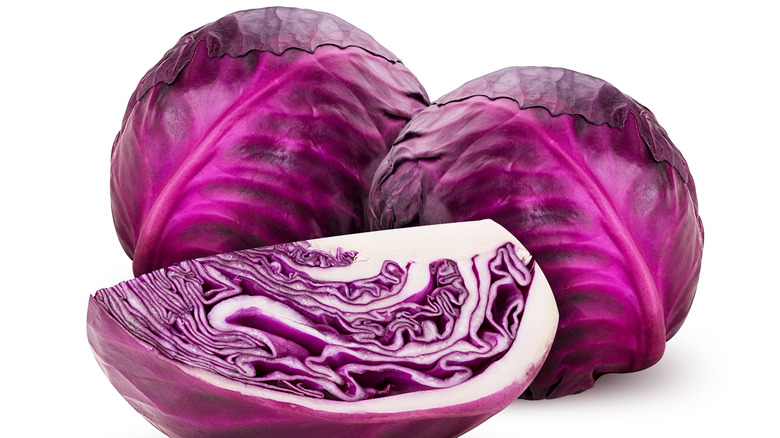Why You Should Always Use Shredded Green Cabbage For Creamy Casseroles
A casserole is one of those one-pot meals that are perfect for weeknights, dinner parties, and even desserts (sweet potato casserole, anyone?). Some of the OG ones were mainly made up of rice and meat, with lasagna, moussaka, and pot pies following, per Foodicles.
Casseroles have further evolved to represent specific countries or regions. For instance, according to Science Direct, Cuban casseroles consist of root vegetables and legumes, while casseroles in Chile, Ecuador, or Bolivia typically rely on whole quinoa seeds. In this respect, the variations of casseroles are endless, though MasterClass insists that some of the most popular ones are tuna casserole, green bean casserole, corn chip pie, and hotdish.
Some casseroles are rich in carbs, while others are keto-friendly for certain dietary needs. One of these is cabbage casserole, which is comforting, a little bit sweet, and versatile for pairing with an array of proteins, veggies, and starchy ingredients. But before you go about making one, be sure to opt for green cabbage instead of red cabbage. Here's why.
Red cabbage may lead to unappetizing colors
There are actually many types of cabbage, ranging from bok choy and napa to dutch white and parel. But to make things easier, MasterClass recommends using shredded or chopped green cabbage in casseroles. As they explain, shredded cabbage makes the casserole creamier, while chopped cabbage has a more rustic appeal.
But what's with MasterClass' disapproval of red cabbage? Well, it mainly has to do with color over flavor. Apparently, red cabbage can change its color depending on its pH levels, according to Food Crumbles. Lower pH levels result in pink or light purple colors, while higher levels equate to dark purple or blue colors, which may look slightly off-putting in casserole dishes. Furthermore, these pH levels seem to vary depending on how acidic the red cabbage is. If the cabbage is mixed with lime juice, for instance, this keeps the pH low and, thus, the color more vibrant. Conversely, little to no acidity makes the cabbages' anthocyanin molecules change their structure, which leads to color changes.
When it comes to cabbage casseroles, acidity, like lime juice, is usually not a common ingredient, so it makes sense as to why red cabbage would (potentially) change its color when baked. But the use of such acidity may change the flavor profiles of certain casserole recipes, so it's probably best to skip red cabbage and just use green cabbage instead.

